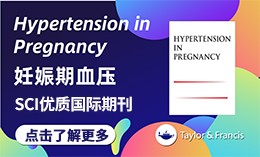-
Splice-modifying drug mechanisms Nat. Chem. Biol. (IF 12.9) Pub Date : 2024-07-26 Jorge Herrero-Vicente, Douglas L. Black, Juan Valcárcel
-
Direct RAS inhibitors turn 10 Nat. Chem. Biol. (IF 12.9) Pub Date : 2024-07-26 Jonathan M. L. Ostrem, Ulf Peters, Kevan M. Shokat
-
Metabolic determinants of germinal center B cell formation and responses Nat. Chem. Biol. (IF 12.9) Pub Date : 2024-07-26 Jun Wu, Jiawen Zhou, Gen Li, Xuan Sun, Chen Xiang, Haiyan Chen, Peng Jiang
-
Phospholipid biosynthesis modulates nucleotide metabolism and reductive capacity Nat. Chem. Biol. (IF 12.9) Pub Date : 2024-07-26 Yibing Zhu, Xiaomeng Tong, Jingyuan Xue, Hong Qiu, Dan Zhang, Dao-Qiong Zheng, Zong-Cai Tu, Cunqi Ye
-
Restoring susceptibility to β-lactam antibiotics in methicillin-resistant Staphylococcus aureus Nat. Chem. Biol. (IF 12.9) Pub Date : 2024-07-26 Van T. Nguyen, Biruk T. Birhanu, Vega Miguel-Ruano, Choon Kim, Mayte Batuecas, Jingdong Yang, Amr M. El-Araby, Eva Jiménez-Faraco, Valerie A. Schroeder, Alejandra Alba, Neha Rana, Safaa Sader, Caitlyn A. Thomas, Rhona Feltzer, Mijoon Lee, Jed F. Fisher, Juan A. Hermoso, Mayland Chang, Shahriar Mobashery
-
The rise of patient avatars in precision oncology Nat. Biotechnol. (IF 33.1) Pub Date : 2024-07-26 Lukas Ehlen, Michael Schmueck-Henneresse
Response to anticancer treatment is dictated not only by availability of molecular targets within the tumor, but also by the highly heterogenous, patient-specific composition of cells within tumors and their complex tumor microenvironment (TME). Consequently, some patients demonstrate remarkable responses to anticancer therapies, whereas others experience negligible effects. Thus, there is an urgent
-
Prephenate decarboxylase: An unexplored branchpoint to unusual natural products Cell Chem. Bio. (IF 6.6) Pub Date : 2024-07-25
-
Genetically engineered synthetic cells activate cargo release upon temperature shift Nat. Chem. Biol. (IF 12.9) Pub Date : 2024-07-25
-
A mini-colon models colon cancer and its microenvironment Nat. Biotechnol. (IF 33.1) Pub Date : 2024-07-25 Colin Hutton, Vivian S. W. Li
-
Targeting type I DED interactions at the DED filament serves as a sensitive switch for cell fate decisions Cell Chem. Bio. (IF 6.6) Pub Date : 2024-07-24
-
Large-scale discovery of chromatin dysregulation induced by oncofusions and other protein-coding variants Nat. Biotechnol. (IF 33.1) Pub Date : 2024-07-24 Max Frenkel, James E. Corban, Margaux L. A. Hujoel, Zachary Morris, Srivatsan Raman
-
Unlocking saponin biosynthesis in soapwort Nat. Chem. Biol. (IF 12.9) Pub Date : 2024-07-23 Seohyun Jo, Amr El-Demerdash, Charlotte Owen, Vikas Srivastava, Dewei Wu, Shingo Kikuchi, James Reed, Hannah Hodgson, Alex Harkess, Shengqiang Shu, Chris Plott, Jerry Jenkins, Melissa Williams, Lori-Beth Boston, Elia Lacchini, Tongtong Qu, Alain Goossens, Jane Grimwood, Jeremy Schmutz, Jim Leebens-Mack, Anne Osbourn
-
-
Targeting Smurf1 to block PDK1–Akt signaling in KRAS-mutated colorectal cancer Nat. Chem. Biol. (IF 12.9) Pub Date : 2024-07-22 Zhiqiang Peng, Wei Fang, Bo Wu, Ming He, Shaohua Li, Jun Wei, Yang Hao, Lujia Jin, Mingqiu Liu, Xin Zhang, Yange Wei, Yingwei Ge, Yinghua Wei, Haili Qian, Yangjun Zhang, Junyi Jiang, Zhijie Chang, Yu Rao, Xueli Zhang, Chun-Ping Cui, Lingqiang Zhang
-
Macrolones target bacterial ribosomes and DNA gyrase and can evade resistance mechanisms Nat. Chem. Biol. (IF 12.9) Pub Date : 2024-07-22 Elena V. Aleksandrova, Cong-Xuan Ma, Dorota Klepacki, Faezeh Alizadeh, Nora Vázquez-Laslop, Jian-Hua Liang, Yury S. Polikanov, Alexander S. Mankin
-
Precise and versatile genome editing with click editors Nat. Biotechnol. (IF 33.1) Pub Date : 2024-07-22
-
Editor’s pick: Indapta Therapeutics Nat. Biotechnol. (IF 33.1) Pub Date : 2024-07-22
Each year, Nature Biotechnology highlights companies that have received sizeable early-stage funding in the previous year. Indapta Therapeutics is using a subset of natural killer cells found in healthy donors to supercharge monoclonal antibodies to fight cancer and autoimmune disease.
-
Click editing enables programmable genome writing using DNA polymerases and HUH endonucleases Nat. Biotechnol. (IF 33.1) Pub Date : 2024-07-22 Joana Ferreira da Silva, Connor J. Tou, Emily M. King, Madeline L. Eller, David Rufino-Ramos, Linyuan Ma, Christopher R. Cromwell, Jasna Metovic, Friederike M. C. Benning, Luke H. Chao, Florian S. Eichler, Benjamin P. Kleinstiver
-
Blocking smoothened cholesterylation: A strategy for overcoming drug resistance in cancer Cell Chem. Bio. (IF 6.6) Pub Date : 2024-07-18
In this issue of Cell Chemical Biology, Liu et al.1 report the identification of Q29, a synthetic diterpenoid that blocks covalent cholesterol modification of smoothened (SMO) and inhibits hedgehog signaling. Q29 is capable of suppressing tumor cell growth, both in vitro and in vivo, and overcoming resistance to SMO inhibitors.
-
STX-bpc: “Brightening” the path to neuronal inhibition Cell Chem. Bio. (IF 6.6) Pub Date : 2024-07-18
In this issue of Cell Chemical Biology, Elleman et al.1 introduce a transformative chemical approach to control neuronal activity with high spatial and temporal resolution. The authors present STX-bpc, a potent neurotoxin that naturally inhibits voltage-gated sodium channels (NaVs), complementing available optogenetic methods for manipulating neuronal activity, cellular communication, and behavior
-
A new light on PLCβ! Cell Chem. Bio. (IF 6.6) Pub Date : 2024-07-18
In this issue of Cell Chemical Biology, Kim et al.1 present a novel optogenetic tool, opto-PLCβ, to control PLCβ signaling optically. In addition to eliciting PIP2 hydrolysis and downstream signaling in cells, opto-PLCβ also enabled probing the impact of PLCβ signaling on amygdala synaptic plasticity and fear learning in mice.
-
CBLs downregulation foretells T cell ubiquitination leading to autoimmunity Cell Chem. Bio. (IF 6.6) Pub Date : 2024-07-18
In a study published in the July issue of Immunity, Li et al.1 demonstrate that expression of the E3 ubiquitin ligases CBL and CBL-B is downregulated in Tfh cells in SLE with Tfh cell expansion and autoimmunity. This leads to reduced ubiquitination of the T cell costimulator ICOS which regulates proteostasis of the Tfh cell transcription factor BCL6 via chaperone-mediated autophagy.
-
Rescuing T cells from stiff tumors Cell Chem. Bio. (IF 6.6) Pub Date : 2024-07-18
In a recent issue of Cell, Zhang et al.1 demonstrate that mechanical features of a solid tumor can drive T cells into dysfunctionality and identify pathways that revert this “exhausted” state.
-
Therapeutic potential of inhibiting the PI3Kγ complex for leukemia Cell Chem. Bio. (IF 6.6) Pub Date : 2024-07-18
In their recent paper published in Nature, Luo et al.1 investigate the cancer-cell-intrinsic roles of the PI3Kγ complex in leukemia. Their findings pinpoint PI3Kγ inhibition as a possible novel treatment avenue for a subset of acute leukemias.
-
Development of covalent chemogenetic K2P channel activators Cell Chem. Bio. (IF 6.6) Pub Date : 2024-07-18
-
Inter-kingdom electromechanical communication Nat. Chem. Biol. (IF 12.9) Pub Date : 2024-07-19 Joshua T. Atkinson
-
Machine learning in preclinical drug discovery Nat. Chem. Biol. (IF 12.9) Pub Date : 2024-07-19 Denise B. Catacutan, Jeremie Alexander, Autumn Arnold, Jonathan M. Stokes
-
Lysine l-lactylation is the dominant lactylation isomer induced by glycolysis Nat. Chem. Biol. (IF 12.9) Pub Date : 2024-07-19 Di Zhang, Jinjun Gao, Zhijun Zhu, Qianying Mao, Zhiqiang Xu, Pankaj K. Singh, Cornelius C. Rimayi, Carlos Moreno-Yruela, Shuling Xu, Gongyu Li, Yi-Cheng Sin, Yue Chen, Christian A. Olsen, Nathaniel W. Snyder, Lunzhi Dai, Lingjun Li, Yingming Zhao
-
Biotech news from around the world Nat. Biotechnol. (IF 33.1) Pub Date : 2024-07-17
AstraZeneca and Pfizer will invest almost $1 billion in manufacturing in France. Pfizer will invest $539 million to build R&D capabilities, and AstraZeneca will spend $388 million to upgrade its Dunkirk site. The Coalition for Epidemic Preparedness Innovations awards BioNTech $145 million to build a network in Africa for producing mRNA-based vaccines for malaria, mpox, tuberculosis and other diseases
-
Bezos backs taste-good lab proteins Nat. Biotechnol. (IF 33.1) Pub Date : 2024-07-17
Jeff Bezos is bankrolling two new centers to research and develop sustainable proteins that taste good and can be produced in the lab. The Amazon founder is donating $60 million from the Bezos Earth Fund to research, create and commercialize new dietary proteins that are environmentally friendly and affordable. The Bezos Centers for Sustainable Protein at Imperial College London and North Carolina
-
Citizen chickpeas Nat. Biotechnol. (IF 33.1) Pub Date : 2024-07-17
The European Union’s biggest citizen science prize for an initiative with the most impact in advancing a sustainable society in Europe has been awarded — and it goes to legumes. The EU Prize for Citizen Science, funded by Horizon Europe, is given to projects in which the general public is engaged in scientific research. This year, the Grand Prize, worth about $64,000, was won by INCREASE, a project
-
Vision–language AI assistance in human pathology Nat. Biotechnol. (IF 33.1) Pub Date : 2024-07-17 Iris Marchal
Pathologists have access to increasingly accurate artificial intelligence (AI) models that can make task-specific or agnostic predictions based on images or genomic data, but a multimodal AI pilot tailored to pathology is still missing. Writing in Nature, Lu et al. introduce PathChat, a generative AI model that can handle both visual and natural language inputs, as a copilot for human pathology. The
-
Roche bets on RNA exon editor Nat. Biotechnol. (IF 33.1) Pub Date : 2024-07-17
Roche has struck a partnership with neuro-focused biotech Ascidian Therapeutics over an RNA editing platform. The deal sees the Boston-based Ascidian, a startup with preclinical programs in retinal, neurological and neuromuscular disorders, receive $42 million up front and up to $1.8 billion in milestones and commercial royalties. Under the agreement, Ascidian provides the Swiss pharma with access
-
Forum: Lancaster and Pașca Nat. Biotechnol. (IF 33.1) Pub Date : 2024-07-17
In this episode of Forum, Chief Editor Barbara Cheifet speaks with Madeline Lancaster and Sergiu Pașca about organoids — cell cultures derived from stem cells and crafted to replicate a particular organ or certain cell types that make up an organ. These two experts in the field discuss neural organoids specifically, and both how they are being used to study basic biology of the brain and their future
-
Counteracting tissue aging through TERT activation Nat. Biotechnol. (IF 33.1) Pub Date : 2024-07-17 Iris Marchal
Telomere dysfunction is one of the primary hallmarks of aging, causing molecular and cellular damage that is associated with aging-related diseases. A potential strategy to counteract this aging process is the reactivation of the core catalytic subunit of telomerase, telomerase reverse transcriptase (TERT), but compounds targeting TERT are lacking owing to a limited understanding of their downstream
-
Cryo-EM structure of a prime editor complex in multiple states Nat. Biotechnol. (IF 33.1) Pub Date : 2024-07-17 Iris Marchal
Prime editing systems combine a SpCas9 protein with a reverse transcriptase and a prime editing guide RNA (pegRNA) to install a wide variety of genome edits, circumventing the need for DNA double-strand breaks or a DNA donor template. How a prime editor complex initiates and terminates pegRNA-guided reverse transcription remains poorly understood. Now, in Nature, Shuto et al. use cryoelectron microscopy
-
Super-resolution microscopy Nat. Biotechnol. (IF 33.1) Pub Date : 2024-07-17
Recent patents relating to systems and methods for super-resolution microscopy.
-
From Bench to Podcast: Roman Sarrazin-Gendron Nat. Biotechnol. (IF 33.1) Pub Date : 2024-07-17
On this episode of From Bench to Podcast, our Associate Editor Cláudia Vilhena interviews Roman Sarrazin-Gendron, first author of an absolutely incredible story about … videogames! During this informal chat, Roman and Cláudia talked about the behind-the-scenes of Borderlands Science. They explored the concepts of citizen science, massively multiplayer online video games, and the impact of community
-
The cost of drug patent expiration date errors Nat. Biotechnol. (IF 33.1) Pub Date : 2024-07-17 S. Sean Tu, Dinis Cheian, Sarah Gabriele, Benjamin N. Rome, Aaron S. Kesselheim
Errors in the US Patent and Trademark Office’s automated program to calculate patent expiration dates could result in hundreds of millions of dollars in added costs to drug prices.
-
People Nat. Biotechnol. (IF 33.1) Pub Date : 2024-07-17
Recent moves of note in and around the biotech and pharma industries.
-
NIH Applicant Assistance Program counteracts decades of underrepresentation in SBIR grant awardees Nat. Biotechnol. (IF 33.1) Pub Date : 2024-07-17 Katharine L. Korunes, Ethan C. Cissell, Tiger Xie, Eva R. Garland
-
Fungal detox: investors eye mycelium bioremediation Nat. Biotechnol. (IF 33.1) Pub Date : 2024-07-17
The digestive prowess of fungi to decontaminate natural environments from polluting plastics, oil spills, toxic waste and even radiation is gaining traction around the globe.
-
Five questions with Ryan Flynn Nat. Biotechnol. (IF 33.1) Pub Date : 2024-07-17 Michael Francisco
A physician-scientist exploring the mechanisms and physiological relevance of glycoRNAs talks about being useful, the challenges of running a laboratory, and translating foundational knowledge into products that will benefit people.
-
A community effort to track commercial single-cell and spatial ’omic technologies and business trends Nat. Biotechnol. (IF 33.1) Pub Date : 2024-07-17 Joachim De Jonghe, James W. Opzoomer, Amaia Vilas-Zornoza, Peter Crane, Benedikt S. Nilges, Marco Vicari, Hower Lee, David Lara-Astiaso, Torsten Gross, Jörg Morf, Kim Schneider, Juliana Cudini, Lorenzo Ramos-Mucci, Dylan Mooijman, Katarína Tiklová, Sergio Marco Salas, Christoffer Mattsson Langseth, Nachiket D. Kashikar, Charles E. S. Roberts, Joakim Lundeberg, Mats Nilsson, Alex K. Shalek, Adam P.
-
Discovery of a mu-opioid receptor modulator that in combination with morphinan antagonists induces analgesia Cell Chem. Bio. (IF 6.6) Pub Date : 2024-07-17
-
Direct observation of prion-like propagation of protein misfolding templated by pathogenic mutants Nat. Chem. Biol. (IF 12.9) Pub Date : 2024-07-15 Krishna Neupane, Abhishek Narayan, Supratik Sen Mojumdar, Gaurav Adhikari, Craig R. Garen, Michael T. Woodside
-
G•U wobble base pairs improve site-directed RNA base editing Nat. Biotechnol. (IF 33.1) Pub Date : 2024-07-12
-
Enzymatic synthesis of RNA oligonucleotides Nat. Biotechnol. (IF 33.1) Pub Date : 2024-07-12 Marcel Hollenstein
-
Template-independent enzymatic synthesis of RNA oligonucleotides Nat. Biotechnol. (IF 33.1) Pub Date : 2024-07-12 Daniel J. Wiegand, Jonathan Rittichier, Ella Meyer, Howon Lee, Nicholas J. Conway, Daniel Ahlstedt, Zeynep Yurtsever, Dominic Rainone, Erkin Kuru, George M. Church
-
Precise in vivo RNA base editing with a wobble-enhanced circular CLUSTER guide RNA Nat. Biotechnol. (IF 33.1) Pub Date : 2024-07-12 Philipp Reautschnig, Carolin Fruhner, Nicolai Wahn, Charlotte P. Wiegand, Sabrina Kragness, John F. Yung, Daniel T. Hofacker, Jenna Fisk, Michelle Eidelman, Nils Waffenschmidt, Maximilian Feige, Laura S. Pfeiffer, Annika E. Schulz, Yvonne Füll, Erez Y. Levanon, Gail Mandel, Thorsten Stafforst
-
The hydrophobicity of the CARD8 N-terminus tunes inflammasome activation Cell Chem. Bio. (IF 6.6) Pub Date : 2024-07-10
Mounting evidence indicates that proteotoxic stress is a primary activator of the CARD8 inflammasome, but the complete array of signals that control t…
-
The power supply for biological nitrogen fixation Nat. Chem. Biol. (IF 12.9) Pub Date : 2024-07-10 Günter Fritz, Peter M. H. Kroneck, Julia Steuber
-
CAR-Ts sweep into autoimmunity Nat. Biotechnol. (IF 33.1) Pub Date : 2024-07-10
Biotechs are equipping CAR-T cells to destroy B cells — not to treat blood cancers, but to take on multiple sclerosis and a raft of autoimmune disorders.
-
The physiological and pathological roles of RNA modifications in T cells Cell Chem. Bio. (IF 6.6) Pub Date : 2024-07-09 Yu Deng, Jing Zhou, Hua-Bing Li
-
The anti-tubercular callyaerins target the Mycobacterium tuberculosis-specific non-essential membrane protein Rv2113 Cell Chem. Bio. (IF 6.6) Pub Date : 2024-07-08 David Podlesainski, Emmanuel T. Adeniyi, Yvonne Gröner, Florian Schulz, Violetta Krisilia, Nidja Rehberg, Tim Richter, Daria Sehr, Huzhuyue Xie, Viktor E. Simons, Anna-Lene Kiffe-Delf, Farnusch Kaschani, Thomas R. Ioerger, Markus Kaiser, Rainer Kalscheuer
-
Simultaneous multi-site editing of individual genomes using retron arrays Nat. Chem. Biol. (IF 12.9) Pub Date : 2024-07-09 Alejandro González-Delgado, Santiago C. Lopez, Matías Rojas-Montero, Chloe B. Fishman, Seth L. Shipman
-
An alternative mechanism for recruiting Cas2/3 in a phage-encoded CRISPR–Cas system Nat. Chem. Biol. (IF 12.9) Pub Date : 2024-07-08
-
Distinct phases of cellular signaling revealed by time-resolved protein synthesis Nat. Chem. Biol. (IF 12.9) Pub Date : 2024-07-08 Gihoon Lee, Tom W. Muir
-
Engineering miniature IscB nickase for robust base editing with broad targeting range Nat. Chem. Biol. (IF 12.9) Pub Date : 2024-07-08 Linxiao Han, Yueer Hu, Qiqin Mo, Hao Yang, Feng Gu, Fang Bai, Yadong Sun, Hanhui Ma
-
Cas1 mediates the interference stage in a phage-encoded CRISPR–Cas system Nat. Chem. Biol. (IF 12.9) Pub Date : 2024-07-08 Laixing Zhang, Hao Wang, Jianwei Zeng, Xueli Cao, Zhengyu Gao, Zihe Liu, Feixue Li, Jiawei Wang, Yi Zhang, Maojun Yang, Yue Feng












































 京公网安备 11010802027423号
京公网安备 11010802027423号